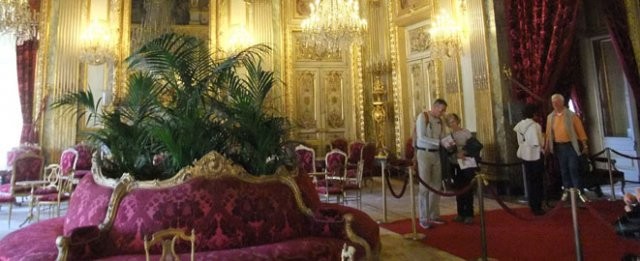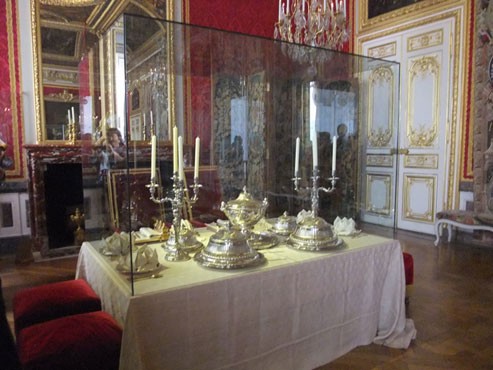
The MAS office will be closed for Christmas Holidays December 24th to January 4th.
Usual office hours will resume on January 5th, 2026
As a continuation of our summer conservation series, we will be finishing off the final few Agents of Deterioration as defined by the Canadian Conservation Institute (CCI) in Ottawa. If you want to learn more about CCI, see their website

The use of stanchions is good at keeping people away
Vandalism and theft are very un-nerving acts when they happen to you. We can prevent them by understanding how/why they occur and what we can do to stop them from occurring. While some acts of vandalism and theft are planned out in advance, others are acts of opportunity. Ideally, all objects should be given the same level of protection, but sometimes this is difficult. Instead, priority is given to valuable and/or vulnerable objects. Value can be assigned through an appraisal value or through the significance of an object. Vulnerable objects could include those that are small and easily pocketed. These are reasons why someone might steal or vandalize objects, but who are these people?
What has been determined is that the persons usually responsible for these acts are not professionals and typically act on the spur of the moment. In the United States, it has been found that vandalism is often perpetrated by young males below the age of 18. Vandalism and theft is also incurred by insiders; there has been considerable documentation to show that internal parties participate in theft (see the article Military Museums Asking for Return of Cache of Stolen Artifacts below). We hear a great deal in the news about big museum “heists”, however it is theft and vandalism in smaller museums happens on a more frequent basis than one might suspect. It is hard to determine how often they do occur as there is little public information dedicated to this. CCI states “that for every theft that becomes public knowledge, there are probably many more that go unreported”. Something to think about indeed!
So, how can we protect our museum and its collections? There are several methods that can be implemented that can deter acts of vandalism and theft. The use of a Zoning method is often employed in museums (and various other institutions) to protect what is inside. Zoning breaks down areas into: Public Zone; Reception Zone; Operational Zone; Security Zone; and High Security Zone. Each has it’s own policies of entry and levels of security ranging from low to very high. See the CCI page for a more detailed breakdown on what these policies are.
Barriers (physical or psychological) to access are one of the first lines of defense. This could mean implementing stanchions, locking doors, baring

windows, using temporary walls, display cases (or other protective coverings), use of tour guides and/or security guards, or even tape on the floor. If you are having construction completed at your museum, this is also a possible risk. Do not leave anyone unattended at the museum who is not part of the organization. Make policies of how you will deal with each situation. Plexi covering over a table deters thieves
Take a look at your museum, is it isolated, in a high crime area, or have lots of coverings to hide under outside? These are aspects that contribute to your institution being at risk to theft or vandalism. Ensure you have good lighting to expose activity at night; clearing away shrubbery exposes nighttime creepers.
Detection, how do you know your museum has been effected by vandalism or theft? Most of the time, it’s quite evident when you’ve been hit by these acts. Though, sometimes its hard to know if you have been robbed if you don’t know what’s in the museum or check on it often. This is why a scheduled inventory of the collection is needed and taking stock of what is out on a daily basis when you pass through. Some suggest cameras as a good mode of detection, as long as you don’t confuse it with actual security. Cameras are not a deterrent to criminal activity. Don’t let security equipment lull you into a false sense of security. Nothing works better than committed individuals following the right policies and procedures in regards to security. If you find yourselves in an incident where you are engaging with the perpetrators, don’t engage them. This is best left to the police.
If something is stolen or vandalized, report it to the police. Having good documentation of objects in your collection makes it much easier to report and identify the missing objects. Unfortunately, the rate of stolen objects that are returned is low, less than 10-15% after the first 2-3 weeks.
Click here if you want to read the full CCI article on Thieves and Vandals.
What do you think? Are you employing any of these methods?
Here are a few news stories relating to the theft of museums:

Usual office hours will resume on January 5th, 2026

Just a reminder that the Final Report for the Museum Improvement Micro Grant for Community Museums is due December 5th! Your final report will require you to provide a brief

Thursday October 16, 202512:00pm CSTOnline via Zoom: https://us02web.zoom.us/j/86760471705?pwd=XjoSlWAP0TJZVYrprylmLqujOkVrk2.1 No registration required. The Museum Grant Program (MGP) provides operational funding to help foster strong, vibrant, community-based Saskatchewan museums that are valued